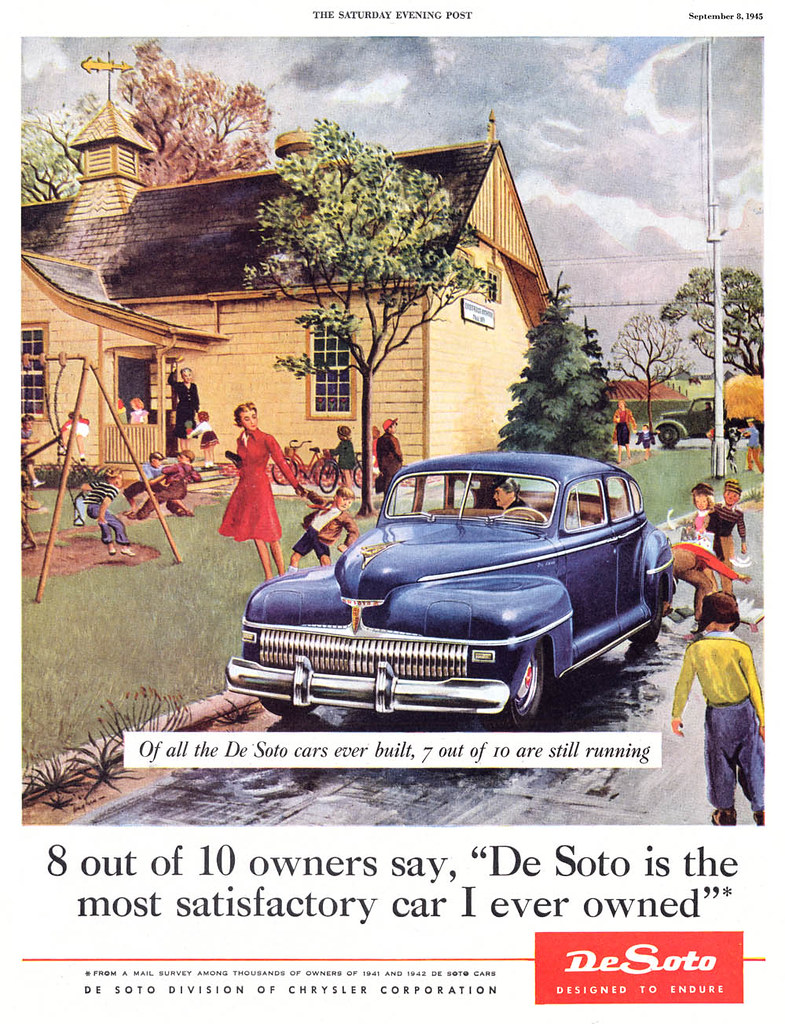
Only a few years later, Hughes was being represented by American Artists. Based on some of the names seen in this 1951 AA ad, he was in extremely good company.

It was common among ambitious illustrators of those days to submit cover sketches for consideration by the editors of the Saturday Evening Post. At that time, no assignment could have been more prestigious than to illustrate the cover of America's most popular, most widely circulated magazine. Hughes made many sketches before submitting the one that landed him his first cover assignment (below).
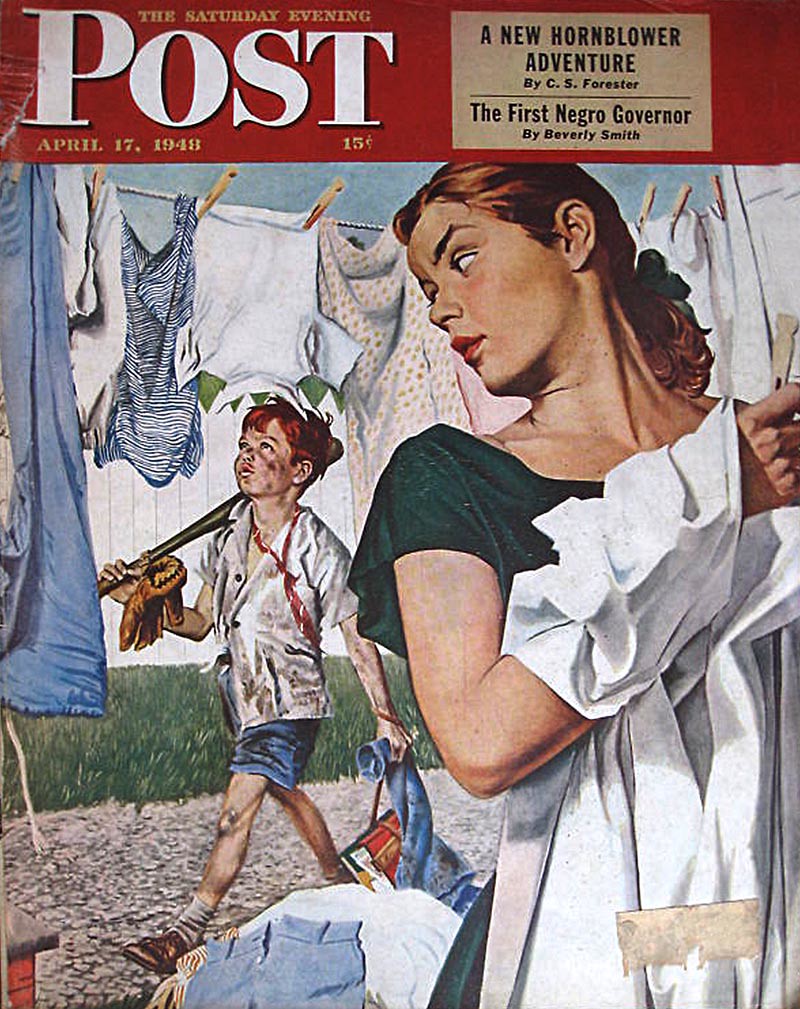
"The finished job was sent back for just one correction," said Hughes. "The editors asked me to 'clean up the boy a bit since he isn't old enough to get that dirty.' Actually, he was fully that dirty," said Hughes, who had posed his young neighbour as the grimy kid. "But I pleased both the editors and his mother by cleaning him up a little."
The public response to the illustration was so spectacular that it must have convinced the Post's editors to make George Hughes one of their regular cover artists. He went on to paint over a hundred Post covers in the following years.
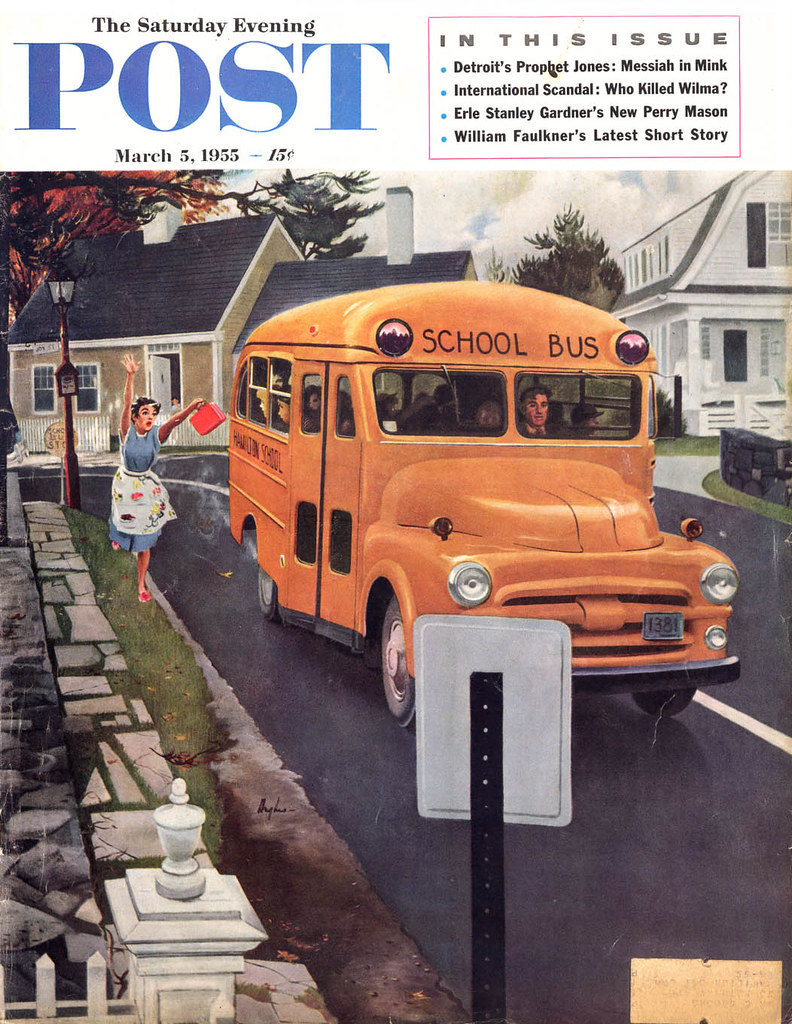
Hughes, like fellow Post cover artist Dick Sargent, was one of the originators of the 'sitcom magazine cover,' as Walt Reed describes it in his biography of George Hughes in "The Illustrator in America." As a result of these cover scenarios, wrote Walt Reed, "readers would spend minutes rather than seconds looking at the covers."
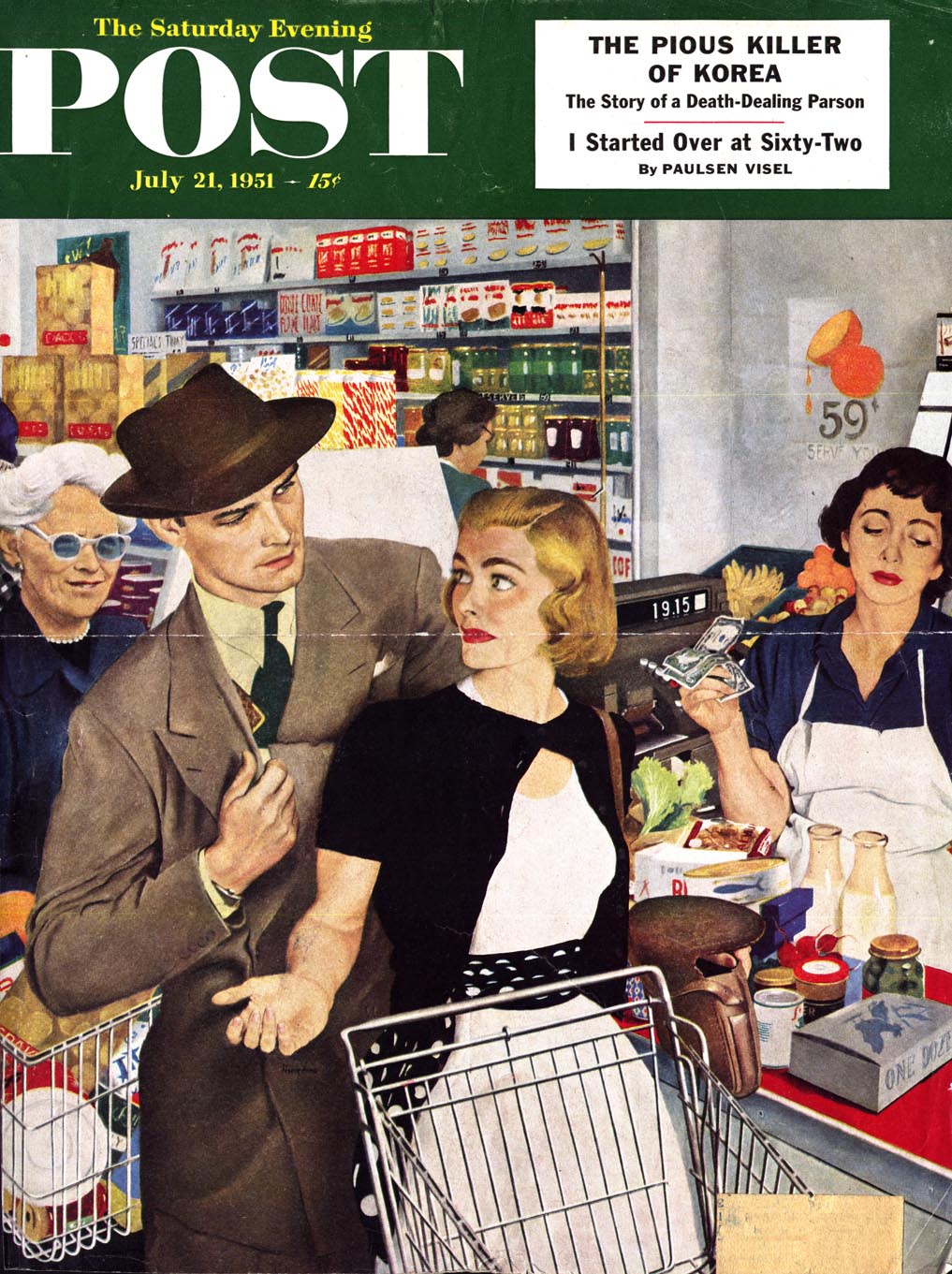
Hughes not only painted covers for the Post, but was a frequent contributor of interior illustrations - usually of a similar light, humorous nature. Often an issue that sports a George Hughes cover will have an interior spread by the artist as well.
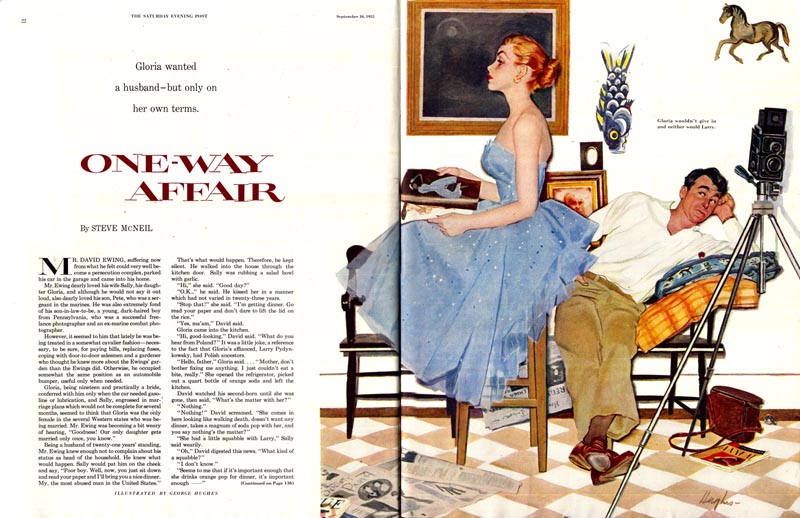
Considering the generous compensation illustrators received for high profile work like this, it's no wonder Hughes "sails much of the summer. By early fall, he returns to retouching his studio full of duck decoys in preparation for the gunning season. Only in winter does he occasionally forsake water sports - for skiing."
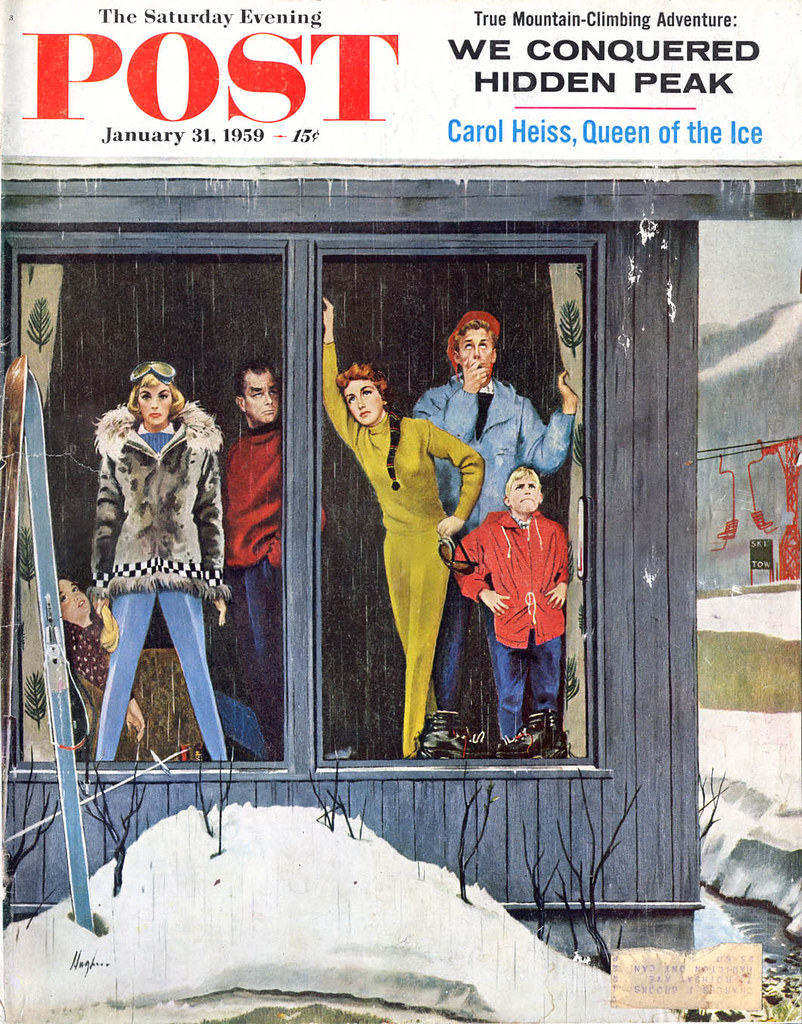
But there was more to George Hughes than comedic Saturday Evening Post illustrations. Some of my favourite of his pieces have a darker tone.

Unencumbered by his sometimes obvious adherence to his photo reference, here you see Hughes' showing us his true, personal style.
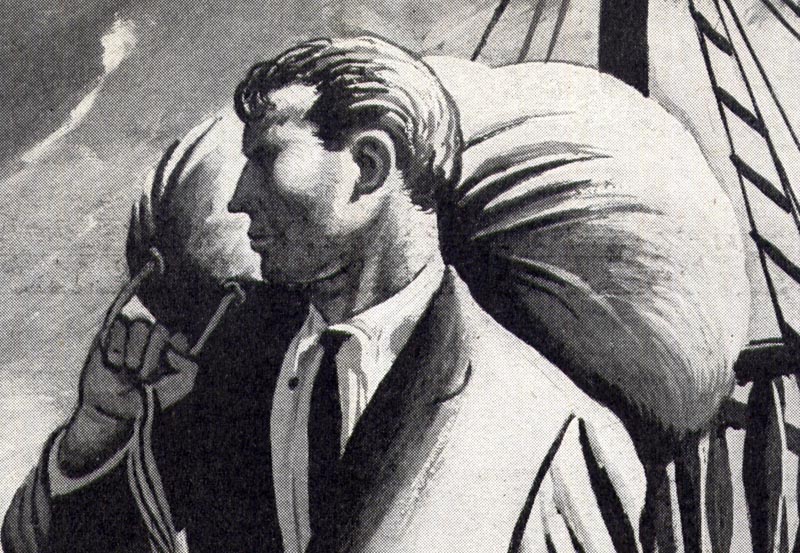
It's a style I find much more compelling than his typical (and probably more popular) work.
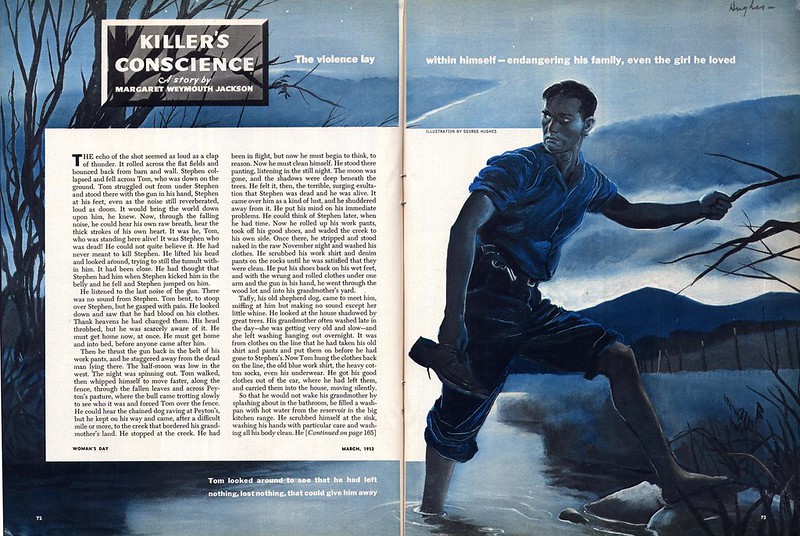
Almost all the work you'll find by George Hughes is full colour painted illustration. Here's a rare example of his black and white pencil technique...
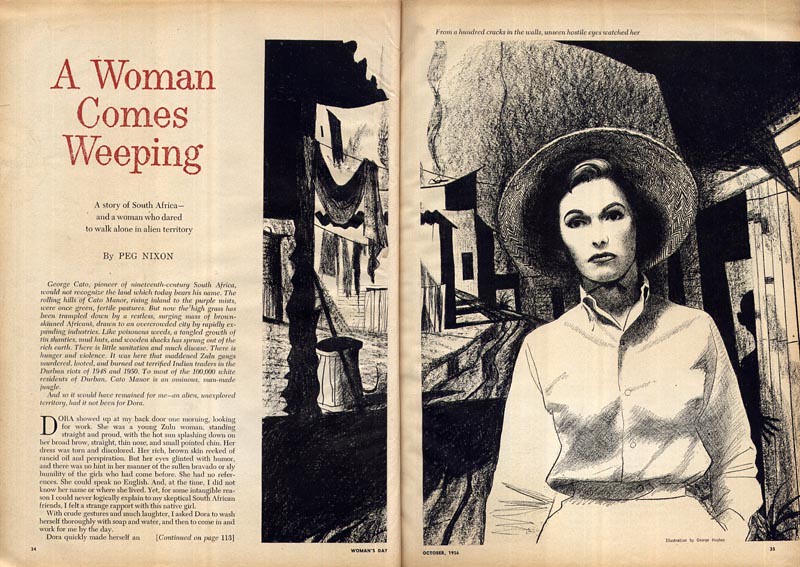
... and another that looks like it was done on a textured board, perhaps with chalk or crayon.
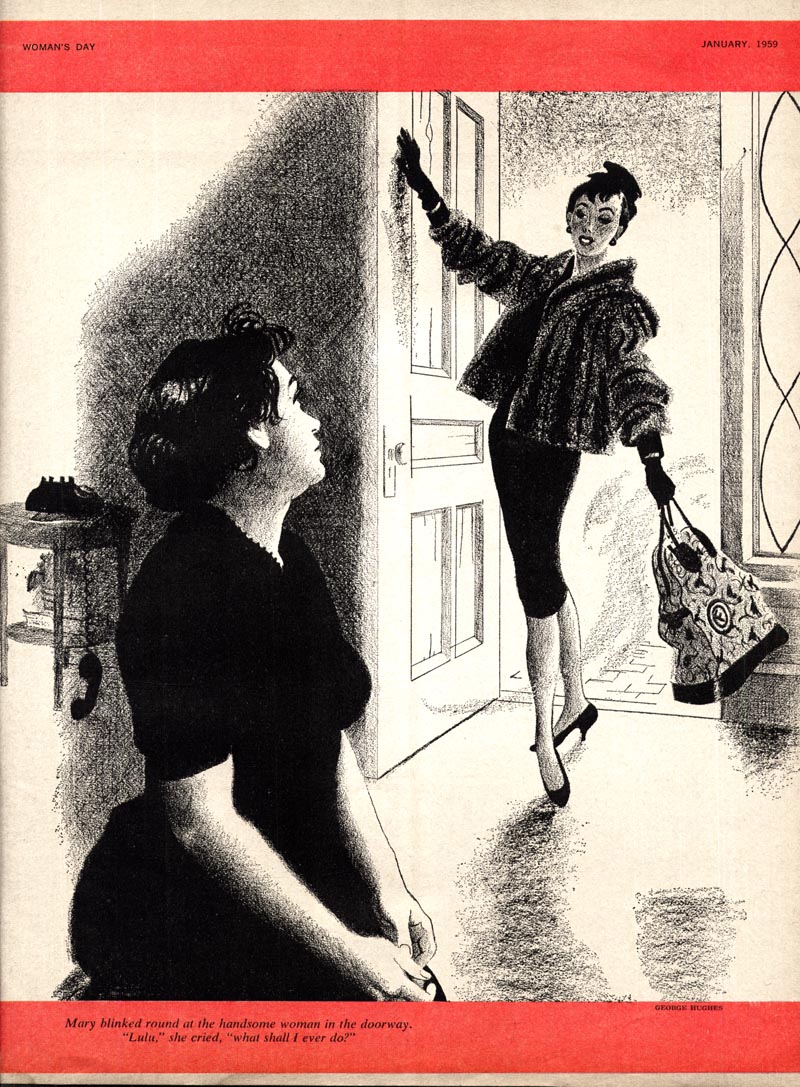
Hughes could also do romance story illustrations with the best of them - but rarely did. I think he did a great job on this one, from Good Housekeeping magazine, 1950.

From my research, George Hughes stayed with his reps at American Artists for the duration of the 1950s. As story illustration assignments began to wane, AA managed to land Hughes what must have been a lucrative advertising account for Kraft. Here are two from a series of ads Hughes illustrated in 1960 - a time when most magazine ads were using photography.

I find these so interesting because Hughes is working here in a more or less realistic style. Why Kraft chose to have these ads illustrated is beyond me (though I think Hughes did a great job on them).

Walt Reed tells us that George Hughes moved on to become a portrait artist after the decline of the illustration market. As a painter he exhibited his work at the Pennsylvania Academy of Fine Art, The Detroit Museum, and the Art Institute of Chicago.
George Hughes died in 1990.






0 comments:
Post a Comment